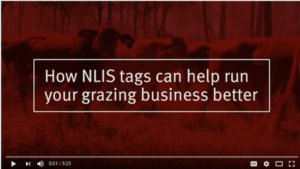New video on making best use of NLIS tags available now
A new video has just been launched that describes new ways that producers can use the National Livestock Identification System (NLIS) to improve data collection and decision making for their herds.
Produced by beef extension officers at the Department of Agriculture and Fisheries, the video has been designed to show producers how to make the best use of NLIS tags to improve business efficiency and land management.
Producers will be aware that NLIS tags are mandatory in Australia for livestock traceability, market access and food safety purposes. As animals are bought, sold and moved they must be tagged with an NLIS-accredited tag or device. But there is a lot more that can be done with the NLIS tag to get value out of the investment.
By using a scale indicator, an NLIS reader and herd management software or excel, individual animal information can be recorded against each NLIS tag. These tags allow for faster data collection, reduce hours of manual data entry and enable producers to view an animals’ life history and performance crush side. This easily accessible information allows producers to make informed decisions regarding culling or drafting and information collected in the yards can be easily and quickly uploaded to herd management software back in the office, saving the time that manual data entry requires.
NLIS tags can be used to track average daily gains, enabling producers to identify poor performers and note their parentage, allowing removal from the production system. Producers can use the tags to record reproductive information such as pregnancy status, foetal age and lactation status. Having this information easily recorded and accessible in the yards ensures unproductive females are not slipping through the cracks.
Decisions surrounding supplementary feeding, paddock shifts and drafting for market specifications can be made using weight gain and body condition data. Temperament and a comprehensive treatment history can also be kept for each animal. This information may have all been recorded manually in the past, but the significant advantage of linking individual animal information with NLIS tags is the reduction in time required for manual entry, the accuracy of the information and the reduction in paperwork.
To see how you can get the most value out of your NLIS tags, head to the Qld Ag YouTube channel: Making better use of your NLIS tags
